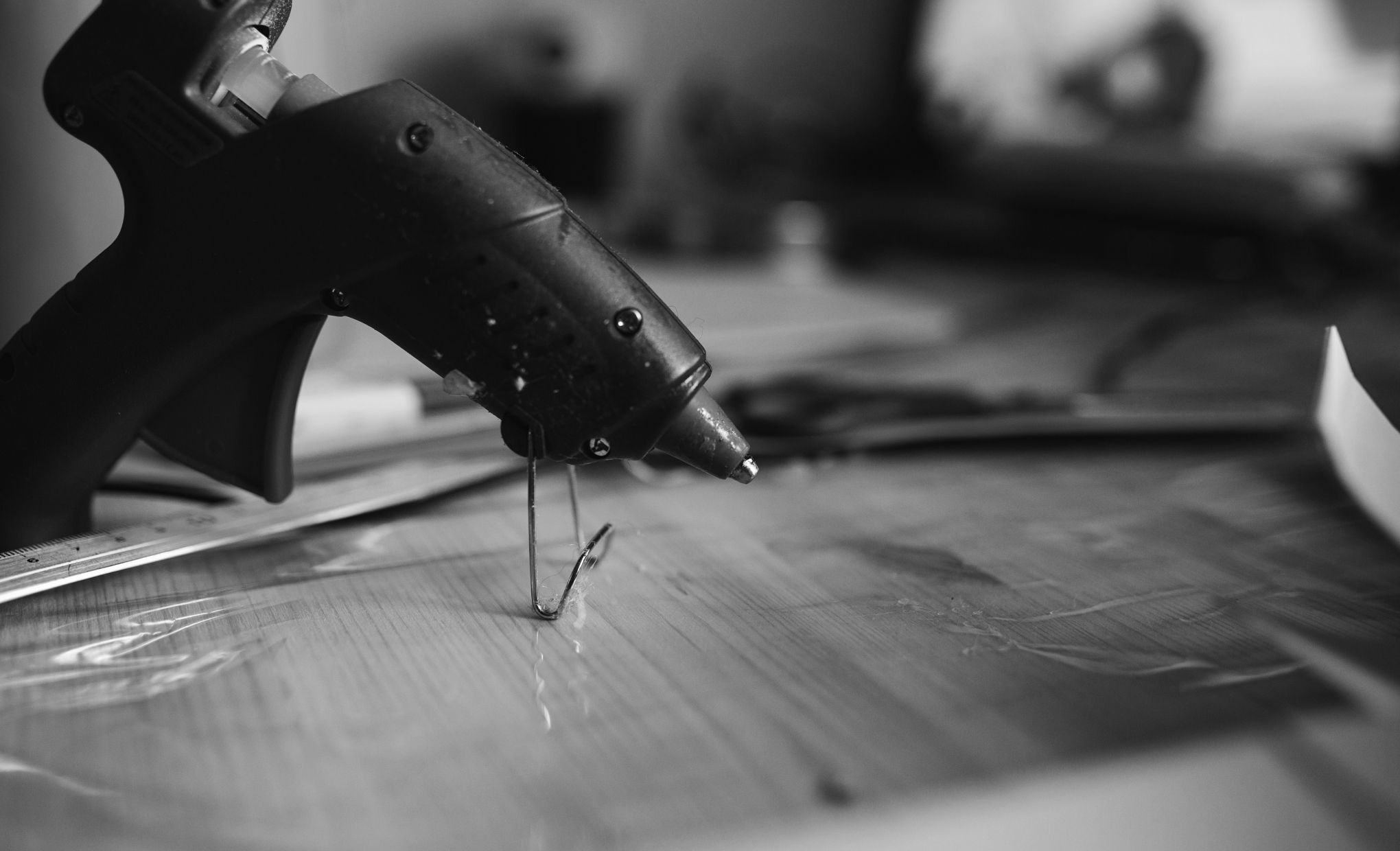Thermoplastic adhesives were invented in the first half of the 20th century. Some sources claim that Paul Cope created them in the 1940s, but there are mentions of thermoplastic adhesives that pre-date Cope’s claim. Regardless of who created them, thermoplastic adhesives (essentially early hot glues) were typically applied in factory settings using a brush. Alternatively, workers might have had to pour the adhesive from a pot. Both methods were messy, time-consuming, and resulted in workers getting burns and blisters on their hands. Boston native George Schultz witnessed these conditions at Haverhill shoe factory and was inspired to create the first industrial glue gun, known as the Polygun, in 1954. This early glue gun was imperfect but proved a crucial innovation across industries. Shultz followed up his invention by founding Industrial Shoe Machinery in Boston, which he later sold to 3M in 1973. In 1971, Carl Weller filed a patent for “an electrically heated glue gun having an elongated tubular melt chamber for receiving a solid adhesive rod”. He's widely credited as the inventor of the glue stick-style glue gun, which remains popular today in crafting and art circles. The 1970s also saw several different patents filed for industrial glue guns. Notably, the TEC range was introduced in 1974 with the Hipermatic TE glue gun, the second all-electric industrial 43mm glue gun available on the market. (Notably, previous glue guns that used glue sticks were aimed at the DIY markets only.) In 1976, Robert L. Ornsteen patented his 43mm industrial glue gun, which served as a direct predecessor of the TEC 3200 model used today, one of several in the modern TEC range. Today’s glue guns range from small models designed for crafting to large, industrial versions designed for heavy-duty use. There are even spray glue guns available! While it may seem like an unassuming technology, the glue gun has played a key role in both arts and crafts and many industrial pursuits and has made applying hot glue easier and safer.

Your go-to guide for weird history facts
Subscribe to the FREE daily email that makes learning about history fun.


